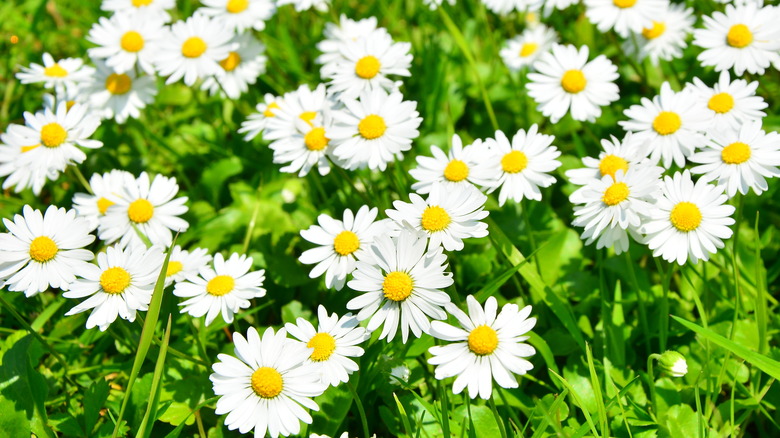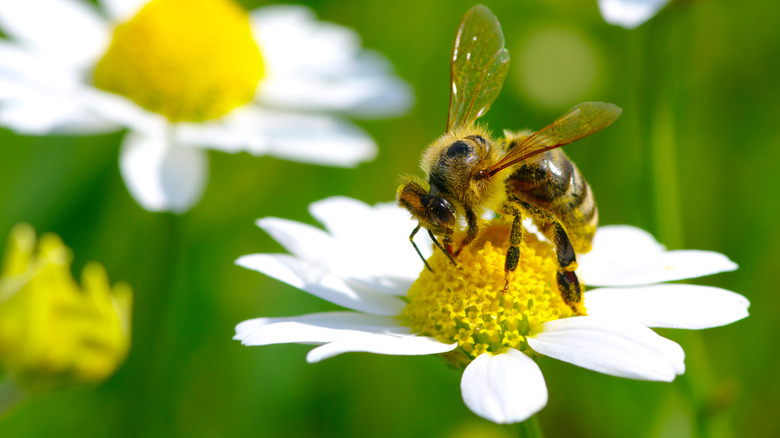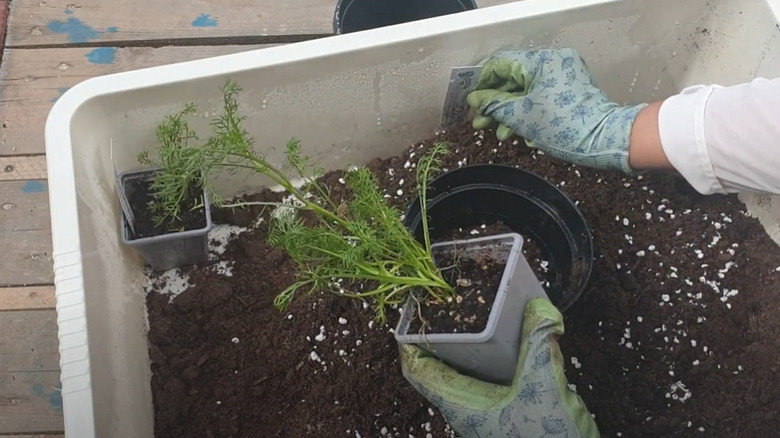Chamomile Lawn: The Low-Maintenance Grass Alternative You May Want To Consider
Doesn't a manicured sweep of emerald green that is a well-tended lawn set many hearts aflutter? It's been an emblem of diligence, attention to detail, and a rhythm of watering, fertilizing, aerating, and, God help us, repeated mowing. But this obsession with the perfect green tapestry could risk becoming all-consuming, guzzling your time and resources. But what if there existed a low-maintenance grass alternative that gives you the same joy without hijacking your weekends? Enter chamomile, more recognized for its medicinal perks than its ground coverage qualities.
Unwrapping the benefits of chamomile lawns takes you beyond mere detangling from the rigorous upkeep of a standard grass lawn. You see, chamomile might not make for the best houseplant; however, outdoors, it paints your yard with a carpet of sun-kissed, fragrant plants that whisper the calming airs of the countryside. Although rich, organic soil remains chamomile's ideal playground, its resourceful spirit means it can survive in even less fertile soils. Its accommodating nature embraces partial shade to full sun exposure.
Chamomile's narrative is one of diversity and preferences. You might swoon over "Treneague," a non-flowering, low-growing, creeping variant best propagated by division. Or you might be pulled toward "Flore Pleno," a flowering variant inviting deadheading to forestall bare patches. In essence, your infatuation with immaculate lawns can morph with this delightful grass alternative that promises less work and more joy.
Less demanding grass alternatives enhance biodiversity
The grass alternative that is chamomile demands little of your time and resources once established. Ensuring young plants are well-soothed with an inch of water per week gives them the ideal start, and from there on, it's smooth sailing. Picture chamomile lawn staging a performance in your garden, weaving a spectacle of sights and smells. You'll love how the apple-like fragrance wafting from its foliage adds an olfactory element to your garden.
Summer and early fall see this organic carpet transform into a visual delight, blooming with the exquisite beauty of white petals cupping cheerful yellow centers. The plus point: you can snip fresh blossoms for a refreshing chamomile tea infusion brimming with health-enhancing properties. Even the inevitable wilt of the flowers is an opportunity rather than a problem. Deadheading the faded blooms invigorates the plant, keeping your lawn robust.
Another reason to use chamomile in your garden reveals itself under the lens of Mother Nature. Its fast-paced growth and low-demand nature are your golden tickets to a pristine lawn without blowing the hassles of commercial fertilizers. Impressively, you nurture a vital cog in the wheel of biodiversity that attracts beneficial insects like hoverflies and ladybugs and pollinators such as bees and butterflies. Indeed, you're not just cultivating a lawn but also fostering animal life within your yard.
How to grow and care for chamomile lawns
If standing at the crossroads of cultivating a chamomile lawn, you find two distinct paths: the perennial Roman Chamomile with its ground cover disposition and the annual German Chamomile that stands taller and creeps less. Mid to late spring is when you should plant chamomile, giving it ample time to establish hearty root systems before winter. In a weed-free spot where sunrays dance unhindered, transfer your transplants, maintaining a roomy 4 to 8 inches of space between each. Those young plants crave your attention in the form of an inch of water weekly. Additionally, avoid the urge to tread over them; instead, designate slabs or stone pathways for your strolls.
Entertaining the idea of starting your chamomile lawn from seeds? Early spring is the ideal time. Scatter the seeds evenly across the bare canvas of earth, then cover them under a thin blanket of finely raked compost or topsoil. You could compact the seeded ground to ensure proper seed-soil contact, then top it off with a quilt of dry grass clippings. As with the transplants, the seeds crave consistent hydration.
Once established, your chamomile lawn adopts a low-maintenance ritual, requesting water only when the ground thirsts. During dry spells, however, heed its silent plea for regular, light waterings to preserve its evergreen glow. And remember, chamomile plays coy with mowing, favoring only careful deadheading when blooming becomes too enthusiastic. Don't discard the flowers, though; steep them for a soothing cup of tea.


